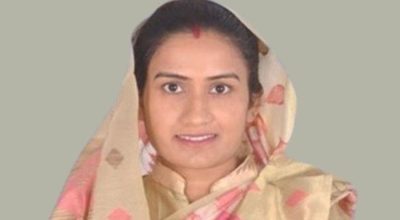
Kathmandu, Nov 7: Nepal’s preparation for the 29th UN Conference of the Parties on Climate Change (COP 29) scheduled to take place at Baku, Azerbaijan from November 11-22 has reached final phase.
The Ministry of Forests and Environment mentioned that necessary homework has been completed for the same. A team comprising Ministry’s three joint secretaries and experts has already reached Baku a week back to participate in different meetings scheduled on the eve of the conference and to carry out the necessary preparation.
The Ministry has determined priority of agenda to make its presence strong in the conference. Forests and Environment Minister Ain Bahadur Shahi Thakuri shared that mainly climate adaptation, loss and damage, climate finance, technology transfer and development, and capacity development would be raised with priority in the conference.
The Ministry has prepared national status paper based on the issues raised in past conferences, other international forums, the guideline received from parliamentary committee and the suggestions from stakeholders after holding discussions in different phases.
Specially, issues of loss and damage, mountain region and climate finance have been kept in top priority in the national status paper.
Nepal is participating in the COP-29 under the leadership of President Ramchandra Paudel. He is scheduled to address ‘World Leaders Climate Action Summit’. It is said that Nepal would also hold a separate high-level session under President Paudel’s leadership on November 13 to draw world’s attention to its agenda.
Nepal has already got permission from UNFCCC to hold a high-level meeting on ‘Addressing Climate Loss and Damage in Mountainous Region’ during the conference.
UN representatives, chiefs and representatives of mountain countries, chiefs and representatives of development partners, and the concerned stakeholders will participate in the high-level meeting.
Nepal has prepared to share the losses from unusual monsoon-related hazards in Melamchi, Mustang, Kanchanpur, Thame, and the Kathmandu Valley with the session.
A significant change has been observed in the patterns of monsoon rains in Nepal, including their intensity, scale, and timing, which is attributed to the impacts of climate change. This year alone, Nepal has experienced severe weather events, including Glacier Lake outbursts, unexpected landslides, and flooding, resulting in considerable loss of lives and property.
Nepal is one of the countries highly vulnerable to the effects of climate change.
In response, the country has raised its concerns in international forums and made ambitious commitments to reducing emissions of carbon gas and adapting to climate change.
Nepal has already presented its second Nationally Determined Contributions (NDC) in 2077 (2020) and its National Adaptation Plan (NAP) in 2079 (2022), highlighting strategies to reduce carbon emissions and adapt to the changing climate.
Similarly, Nepal has approved and implemented the Third National Communications Report, National Climate Vulnerability and Risk Assessment Report, Long-term Low Emission Development Strategy, and National Loss and Damage Framework in 2078 (2021), and the Nationally Determined Contribution Implementation Plan in 2080 (2023).
Moreover, climate adaptation, resilience, and a green economy are the priorities of the 16th Periodic Plan.
At COP26, Nepal presented ambitious plans which include the escalation of forest area to 45% by 2030 and the reduction of carbon emissions to zero by 2045.
In terms of afforestation, Nepal has met the target before the deadline. Nepal expects easy and sufficient access to climate finance, as well as support and cooperation from the international community, to achieve its ambitious goals for green and resilient development. RSS #nepal
















